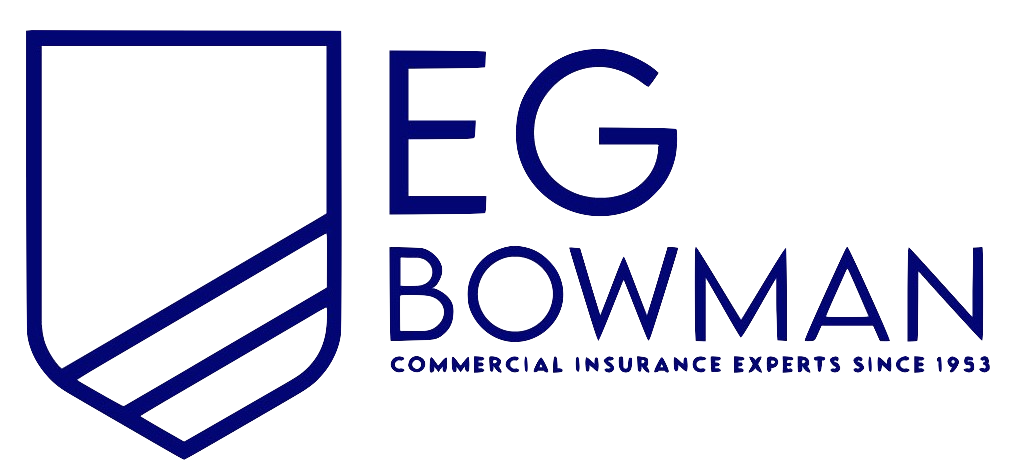New York Assisted Living Facility Insurance
See How We're Different:
or Call Us: 212-425-8150

Most Common Business Policies
Index
Understanding Assisted Living Facilities
The Importance of Insurance for Assisted Living Facilities
Legal Requirements for Insurance in New York
Assessing Risks in Assisted Living Facilities
Choosing the Right Insurance Provider
Cost of Insurance for Assisted Living Facilities
Claims Process for Assisted Living Facility Insurance
Contact Us
As the population ages, the demand for assisted living facilities in New York continues to grow. These facilities offer essential services for seniors, providing them with the support they need to maintain their quality of life. However, operating an assisted living facility comes with its own set of challenges, particularly when it comes to insurance. Understanding the types of insurance available, the legal requirements, and the potential risks is crucial for facility owners. This article aims to provide a comprehensive overview of assisted living facility insurance in New York.
Understanding Assisted Living Facilities
Assisted living facilities (ALFs) are designed to bridge the gap between independent living and nursing homes. They provide a range of services, including personal care, medication management, and social activities, while allowing residents to maintain a degree of independence. In New York, these facilities can vary significantly in size, services offered, and the population they serve. Some ALFs cater specifically to individuals with dementia or other cognitive impairments, while others may focus on providing care for seniors with physical disabilities or chronic illnesses. This diversity allows families to find the right fit for their loved ones, ensuring that each resident's unique needs are met.
Types of Services Offered
Most assisted living facilities provide a variety of services tailored to meet the needs of their residents. Common offerings include:
- Personal care assistance
- Medication management
- Meal preparation
- Housekeeping and laundry services
- Transportation services
- Social and recreational activities
These services are designed to promote a safe and supportive environment for seniors, allowing them to thrive in their later years. Additionally, many facilities offer specialized programs such as fitness classes, art therapy, and educational workshops that encourage residents to engage both physically and mentally. By fostering a sense of community and providing opportunities for social interaction, ALFs play a crucial role in enhancing the quality of life for their residents, helping to combat feelings of isolation and loneliness that can often accompany aging.
Regulatory Framework
In New York, assisted living facilities are regulated by the New York State Department of Health. Facilities must comply with state regulations, which cover everything from staffing requirements to safety standards. Understanding these regulations is essential for ensuring compliance and protecting both residents and staff. Regular inspections and assessments are conducted to ensure that facilities adhere to these guidelines, which include maintaining proper staff-to-resident ratios and ensuring that all caregivers are adequately trained and certified. Moreover, facilities are required to have emergency plans in place, ensuring that residents are safe and well-cared-for in the event of unforeseen circumstances, such as natural disasters or health emergencies. This regulatory oversight not only helps maintain high standards of care but also provides peace of mind for families considering assisted living options for their loved ones.

The Importance of Insurance for Assisted Living Facilities
Insurance is a critical component of risk management for assisted living facilities. It protects against various liabilities that can arise from the operation of the facility. Without adequate insurance coverage, facility owners may face significant financial losses due to lawsuits, property damage, or other unforeseen incidents. Moreover, having comprehensive insurance not only safeguards the facility but also provides peace of mind to residents and their families, knowing that their loved ones are in a secure environment that prioritizes their safety and well-being.
Types of Insurance Coverage
There are several types of insurance coverage that assisted living facilities should consider:
General Liability Insurance
This insurance protects against claims of bodily injury, property damage, and personal injury. For example, if a resident slips and falls on the premises, general liability insurance can cover medical expenses and legal fees. Additionally, this type of insurance can also extend to incidents involving visitors or staff, ensuring that the facility is prepared for a range of potential accidents that could lead to costly claims.
Professional Liability Insurance
Also known as errors and omissions insurance, this coverage is essential for facilities that provide medical or personal care services. It protects against claims of negligence or malpractice that may arise from the care provided to residents. As assisted living facilities often employ healthcare professionals, having this insurance is crucial to defend against lawsuits that could arise from perceived lapses in care, whether they are substantiated or not. This coverage not only protects the facility financially but also helps maintain a standard of care that residents and their families expect.
Property Insurance
Property insurance covers damage to the physical building and its contents. This can include coverage for fire, theft, or natural disasters. Ensuring that the facility is adequately insured against property damage is crucial for financial stability. Furthermore, property insurance can also encompass liability for equipment used in the facility, such as medical devices and safety systems, which are vital for the daily operations and overall safety of residents. In the event of a disaster, having robust property insurance can mean the difference between a facility being able to recover quickly or facing prolonged financial hardship.
In addition to these core types of insurance, assisted living facilities may also want to consider
specialized coverage options such as workers' compensation insurance, which provides benefits to employees who are injured on the job. This type of insurance is particularly important in environments where staff members are frequently lifting or assisting residents, as the risk of injury can be higher. Moreover, facilities might explore cyber liability insurance, especially as they increasingly rely on technology for resident care and administrative functions. With sensitive resident information being stored electronically, protecting against data breaches is becoming an essential aspect of risk management in the modern assisted living landscape.
Legal Requirements for Insurance in New York
In New York, assisted living facilities are required to carry specific types of insurance to comply with state regulations. Understanding these legal requirements is vital for facility owners to avoid penalties and ensure the safety of their residents.
Minimum Insurance Requirements
The New York State Department of Health mandates that all licensed assisted living facilities maintain liability insurance. The minimum coverage amounts can vary, but facilities must ensure they meet or exceed these requirements. It is advisable to consult with an insurance professional to determine the appropriate coverage levels based on the facility's specific needs. Additionally, facilities should regularly review their insurance policies to keep up with any changes in state regulations or operational expansions that might necessitate increased coverage.
Worker’s Compensation Insurance
Worker’s compensation insurance is mandatory for all employers in New York, including assisted living facilities. This insurance provides benefits to employees who are injured on the job, covering medical expenses and lost wages. Ensuring compliance with worker’s compensation laws is essential for protecting both employees and the facility. Furthermore, facilities should implement robust safety protocols and training programs to minimize workplace injuries, which can not only reduce insurance costs but also foster a safer environment for both staff and residents.
Professional Liability Insurance
In addition to general liability and worker’s compensation insurance, assisted living facilities may also consider obtaining professional liability insurance, often referred to as errors and omissions insurance. This type of coverage protects against claims of negligence, malpractice, or failure to provide adequate care. Given the sensitive nature of the services provided in assisted living environments, having this insurance can safeguard against potential legal disputes that may arise from the care provided to residents. It is crucial for facility operators to understand the nuances of professional liability coverage and how it integrates with their overall risk management strategy.
Property Insurance
Property insurance is another essential component for assisted living facilities, as it protects the physical assets of the establishment, including the building, equipment, and furnishings. This insurance covers damages caused by events such as fire, theft, or natural disasters. Facilities should conduct regular assessments of their property to ensure that their coverage reflects the current value of their assets. Additionally, understanding the specific exclusions and limitations of property insurance policies can help facility owners avoid unexpected financial burdens in the event of a loss.

Assessing Risks in Assisted Living Facilities
Operating an assisted living facility comes with inherent risks. Identifying and assessing these risks is crucial for developing a comprehensive insurance strategy. Some common risks include:
Health and Safety Risks
Health and safety risks can arise from various factors, including the physical environment, resident health conditions, and staff training. Ensuring that the facility meets safety standards and that staff are adequately trained can help mitigate these risks. Regular safety audits and maintenance checks are essential to identify potential hazards, such as uneven flooring or inadequate lighting, which could lead to accidents. Additionally, fostering a culture of safety among staff and residents can promote vigilance and encourage everyone to report unsafe conditions promptly.
Liability Risks
Liability risks can stem from incidents such as falls, medication errors, or allegations of neglect. Implementing robust policies and procedures can help reduce the likelihood of such incidents occurring and protect the facility from potential lawsuits. This includes thorough documentation of care plans and medication administration, as well as regular training sessions for staff on best practices in elder care. Furthermore, establishing clear communication channels with residents and their families can help address concerns before they escalate into legal issues, creating a more transparent and trusting environment.
Financial Risks
Financial risks are another critical aspect to consider when managing an assisted living facility. These can arise from fluctuating occupancy rates, unexpected maintenance costs, or changes in regulatory requirements that may necessitate additional expenditures. To mitigate these risks, facilities should maintain a diversified revenue stream, exploring options such as offering specialized services or partnering with local healthcare providers. Additionally, developing a robust financial plan that includes contingency funds can help ensure that the facility remains solvent during challenging times, allowing it to continue providing quality care to its residents.
Reputational Risks
Reputational risks can significantly impact an assisted living facility's success and sustainability. Negative reviews, whether online or through word-of-mouth, can deter potential residents and their families from choosing a facility. To combat this, facilities should actively engage with their community and prioritize transparency in their operations. Regularly soliciting feedback from residents and their families can help identify areas for improvement and demonstrate a commitment to quality care. Additionally, showcasing positive resident experiences through testimonials and community events can enhance the facility's public image, fostering trust and attracting new residents.
Choosing the Right Insurance Provider
Selecting the right insurance provider is a critical step in securing the appropriate coverage for an assisted living facility. Facility owners should consider several factors when making this decision.
Experience and Expertise
It is essential to choose an insurance provider with experience in the assisted living industry. Providers who understand the unique risks and challenges faced by these facilities can offer tailored coverage options and valuable insights.
Coverage Options
Not all insurance providers offer the same coverage options. Facility owners should evaluate the policies available and ensure they align with the specific needs of their facility. This may include additional coverage for specialized services or higher liability limits.
Cost of Insurance for Assisted Living Facilities
The cost of insurance for assisted living facilities can vary significantly based on several factors. Understanding these factors can help facility owners budget effectively and find the best coverage options.
Factors Influencing Insurance Costs
Several factors can influence the cost of insurance for assisted living facilities, including:
- Location of the facility
- Size and capacity of the facility
- Services offered
- Claims history
- Staff training and qualifications
By assessing these factors, facility owners can gain a better understanding of their insurance costs and explore ways to reduce them.
Budgeting for Insurance
When budgeting for insurance, it is essential to consider not only the premiums but also potential deductibles and out-of-pocket expenses. Facility owners should work closely with their insurance provider to develop a comprehensive budget that accounts for all potential costs associated with insurance coverage.
Claims Process for Assisted Living Facility Insurance
Understanding the claims process is crucial for facility owners to ensure a smooth experience when filing a claim. Familiarity with the steps involved can help minimize delays and complications.
Steps to File a Claim
The process for filing a claim typically involves the following steps:
- Notify the insurance provider: As soon as an incident occurs, it is essential to inform the insurance provider to initiate the claims process.
- Document the incident: Collect all relevant information, including photographs, witness statements, and any other supporting documentation.
- Complete the claim form: Fill out the necessary claim forms provided by the insurance company, ensuring all information is accurate and complete.
- Follow up: Stay in contact with the insurance provider to ensure the claim is being processed and address any additional requests for information.
Common Challenges in the Claims Process
Facility owners may encounter various challenges during the claims process, such as disputes over coverage or delays in processing. Being proactive and maintaining open communication with the insurance provider can help mitigate these challenges and facilitate a smoother claims experience.
Future Trends in Assisted Living Facility Insurance
The landscape of assisted living facility insurance is continually evolving. Staying informed about emerging trends can help facility owners adapt their insurance strategies to better meet the needs of their residents and protect their business.
Increased Focus on Cybersecurity
As technology becomes more integrated into assisted living facilities, the risk of cyberattacks increases. Insurance providers are beginning to offer specialized coverage for cybersecurity breaches, protecting facilities from potential data breaches and associated liabilities.
Telehealth and Remote Monitoring
The rise of telehealth services and remote monitoring technologies has transformed the way care is delivered in assisted living facilities. Insurance providers are adapting their policies to address the unique risks associated with these technologies, ensuring that facilities are adequately covered.
Conclusion
Insurance is a vital aspect of operating an assisted living facility in New York. Understanding the various types of coverage available, the legal requirements, and the potential risks is essential for facility owners. By taking the time to assess their insurance needs and work with knowledgeable providers, facility owners can ensure they have the protection necessary to operate safely and effectively.
As the assisted living industry continues to evolve, staying informed about trends and changes in insurance will be crucial for maintaining compliance and safeguarding the well-being of residents and staff alike. By prioritizing insurance as part of their overall risk management strategy, assisted living facilities can thrive in an increasingly complex environment.
